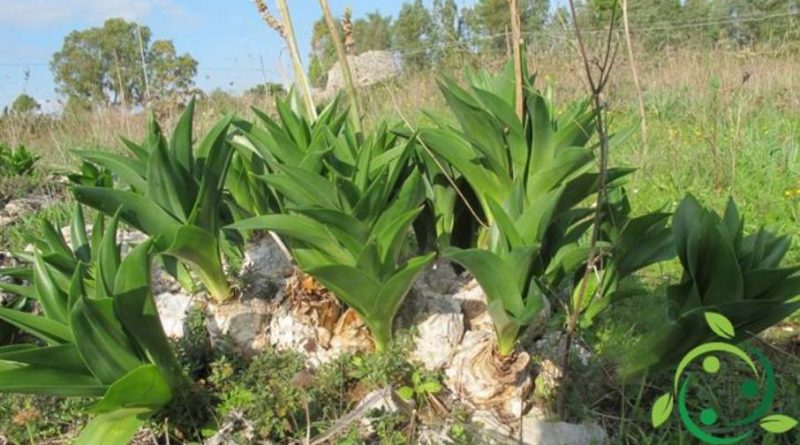Properties and uses of Drimia maritima
Properties and uses of Drimia maritima
The sea squill, also known as sea onion (Drimia maritima (L.) Stearn, 1978), is a herbaceous species of the family Liliaceae characteristic of the Mediterranean basin, where we find it in the wild near the coast. The terms are scientific synonyms of this plant: Scilla maritima L., Urginea maritima (L.) Baker, Charybdis maritima (L.) Speta and Urginea scilla Steinh ..
In this sheet we will see properties and uses of Drimia maritima and also the history of this plant known since antiquity, in which it was already known with the name Scilla. The latter name is still frequently used, especially in herbal medicine. The plant was known as a drug for its cardiotonic and diuretic properties already by the Egyptians, Greeks and Arabs and has been described by Dioscorides, Pliny and Galen.
The Drimia maritima or Scilla marittima has a large bulb (which can reach 4 kg) with a diameter of 12-15 cm and more. In late autumn or spring it leaves dark green leaves that wither before flowering that takes place in late summer. They are of lanceolate shape, approx. 10 cm and long up to 50 cm. It has a whitish green flowering stem that normally reaches the height of more than 100 cm, but can also reach 2 m. It emits an inflorescence consisting of a large number of flowers (even over 100) with a stellar shape with a diameter of just over 1 cm, with white tepals with a median rib of brown color and with greenish-yellow filaments. The apical part of the inflorescence (panicle) often tends to sag because of the weight of the flowers.
The flowering starts from the bottom, lasts a long time and is very decorative. The flowers are odorless but very beautiful and showy so it is often grown for ornamental purposes.
It grows spontaneously near the sea areas in the sand or between the rocks. This typically Mediterranean plant is widespread in Asia Minor, Greece, Malta, Spain, Morocco and Italy.
The sea squill can be grown very easily in all the temperate areas of the Mediterranean and exceptionally in pots of adequate size. The bulb should be planted shallow, with its tip covered only 2-3 cm of soil in a place exposed to full sun. A very permeable, preferably sandy substrate should be chosen. During the summer, the bulbs should never be watered.
The properties of Drimia maritima are due to cardioactive glycosides that have considerable toxicity to humans. In some areas of Sardinia the plant is considered magical and for this reason it is often cultivated in the gardens as protection from the evil eye. Ratticidal activities are also attributed to it. In 2002 an in-depth study was published on the insecticidal effects of Urginea maritima extracts, which confirms the validity of the practice of using the plant as a protective food agent and suggests the possibility of further investigations in this field.
Historically however, the interest in this plant, more than for its ornamental characteristics, has focused on medicinal virtues. The interesting part is the bulb, which is collected in August, before flowering, cut into slices and dried. Be careful because the bulb is poisonous, especially fresh.
The active ingredients contained in the bulb are: glucosides such as scillarene-A and scillarene-B, glucoscillarene and scilliglaucoside.

